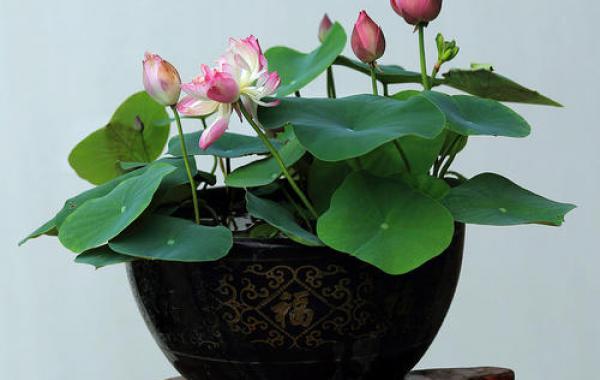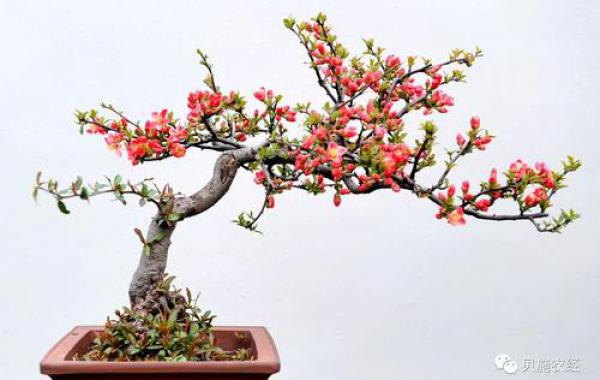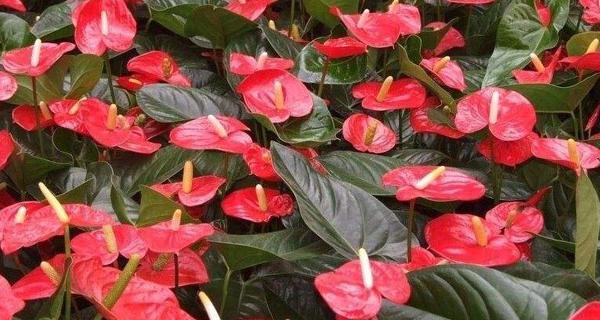What are the conservation methods of potted flowers?

What are the cultivation methods of potted flowers
Cuttage
Division
The conventional propagation methods of potted flowers include seed propagation, vegetative propagation, spore reproduction and so on. Seed reproduction is the use of seeds to reproduce new individuals, most annual or biennial flowers and some perennial flowers commonly used seed reproduction, such as a string of red, melon and leaf chrysanthemum, petunia and primrose and so on. Vegetative propagation is a method of obtaining plants from a part of flower nutrients, such as roots, stems, leaves, buds, etc., which usually includes meristem, cutting, grafting, striping and so on. Perennial herbaceous flowers and woody flowers are commonly divided and propagated by cuttings, such as begonia, daffodils, pineapples, camellia, rhododendron and so on. Cactus and succulent plants are commonly used for cutting and grafting propagation. In addition to meristematic reproduction, ferns can also be propagated by spores, such as kidney fern, iron fern and so on.
High-altitude pressing strip
Grafting
When will potted flowers be watered
Watering potted flowers should pay attention to four key points: water quality, water temperature, water quantity and watering method.
(1) Water quality potted flowers are best watered with soft water. Rain Water, river, lake and pond water are all called soft water, which is suitable for watering flowers. At present, tap water and deep well water are commonly used in flower cultivation, and most of these two kinds of water are hard water. Tap water should be poured into a tank and stored for 5-7 days for reuse. Different plants have different requirements for the acidity and alkalinity of water, such as camellia, jasmine, gardenia, Milan, rhododendron, etc., which are very sensitive to the acidity and alkalinity of soil and water. Black alum can be used to change the acidity and alkalinity of water, adding 20 grams of black alum every 5 kg of water and watering alum once every 15 days.
(2) Water temperature generally, the optimum temperature for flower growth is 20-25 ℃, and the temperature difference between water temperature and soil temperature should be kept within 5 ℃, so that root damage will not occur. It is forbidden to water at noon in summer, it is appropriate to water in the morning and evening. It is appropriate to water at noon in winter, because the temperature of tap water is often lower than room temperature, you can add some warm water when you use it, which is conducive to the growth of flowers.
(3) Water quantity general potted flowers should grasp the principle of "dry and wet". The principle of watering in different seasons is "watering noon in spring, morning and evening in summer, the next day in autumn, and watching frequently in winter".
(4) watering methods most flowers should be sprayed, but flowers in full bloom and flowers with more hairs should not be sprayed.
Cuttage
Division
The conventional propagation methods of potted flowers include seed propagation, vegetative propagation, spore reproduction and so on. Seed reproduction is the use of seeds to reproduce new individuals, most annual or biennial flowers and some perennial flowers commonly used seed reproduction, such as a string of red, melon and leaf chrysanthemum, petunia and primrose and so on. Vegetative propagation is a method of obtaining plants from a part of flower nutrients, such as roots, stems, leaves, buds, etc., which usually includes meristem, cutting, grafting, striping and so on. Perennial herbaceous flowers and woody flowers are commonly divided and propagated by cuttings, such as begonia, daffodils, pineapples, camellia, rhododendron and so on. Cactus and succulent plants are commonly used for cutting and grafting propagation. In addition to meristematic reproduction, ferns can also be propagated by spores, such as kidney fern, iron fern and so on.
High-altitude pressing strip
Grafting
How to fertilize potted flowers
Potted strawberries are not like greenhouse strawberries. Fertilization is the easiest thing to ignore in the daily maintenance of the family. When planting in the pot, organic fertilizer was added at the bottom, and once a week, the organic nutrient solution was applied once a week, and the concentration in summer was thinner than before. When fertilizing, do not water the flowers, easily rotten bud, slowly irrigate along the soil surface.
Management methods of potted flowers
The management methods of potted flowers can refer to the following points:
First, potting and watering
1. Select the flowerpot of the right size and cover the drainage hole of the flowerpot with tiles, so that the concave face of the tiles can meet the requirements of not only no soil leakage, but also slow water leakage. Small pots can be used with a tile, large pots with more cushions, and flowers that are not resistant to moisture should be padded more. After the tile pad is finished, the coarse particles of the culture soil are added to the pot bottom, and the fine culture soil is put on the coarse particles, and then the flowers and seedlings are planted.
2. When watering, the amount of water should be sufficient. After one watering, the soil should be drained and irrigated for the second time, so that the water will overflow before the planting is finished. For potted flowers, watering is an important and meticulous work, and it is necessary to have rich practical experience in judging the water demand of flowers. The amount of water should be judged according to plant species, growth stage, basin size, weather, season and so on. As plants grow and blossom, the demand for water increases gradually. Less watering is needed during the fruiting period. Less water is needed during the dormant period.
3. The watering time is generally 9: 00 or 10:00 in winter, before 8: 00 in the morning and 5: 00 in summer. Plants that are exposed to direct sunlight should be watered more in the morning.
II. Fertilization
1. The ideal fertilizer is compound fertilizer. Flowers that like acid soil, even if they are cultivated in acid soil, will change the acid value of the soil over time. Especially when the flowers are watered with alkaline or neutral water, the change is faster. Acid fertilizer should be used for these flowers, or 0.25% ferrous sulfate should be mixed with fertilizer.
2. Fertilization should be carried out on a sunny day. Loosen the soil before fertilization, and then apply fertilizer after the basin soil dries a little. Water immediately after fertilizing. In the warm growing season, the times of fertilization can be more, about 2 ~ 3 times per month, less in cold weather, about 1 ~ 2 times a month, and in the peak summer growing season, thin fertilizer can be applied once every 5 ~ 7 days.
3. Extra-root topdressing is a fertilization method in which fertilizer is sprayed on the leaf surface and absorbed directly by the leaves. Urea has high nitrogen content and is suitable for topdressing outside the root. It is generally absorbed soon after spraying. Extra-root topdressing should not be carried out at low temperature, but should be sprayed before or in the afternoon. If the fertilizer is mixed with trace elements or other insecticidal and bactericidal agents, the double effect can be achieved. Third, pruning and changing pots
1. There are two kinds of pruning: sparse pruning and short pruning. The former is to completely cut off diseased branches, withered branches, overlapping branches and other unnecessary branches from the base; the latter is to cut off part of the tip of the branch, and the direction of remaining buds should be determined according to the direction in which the branches are produced. If you want to grow upward, leave the inside buds. If you want to grow diagonally to the outside, leave the lateral buds. The competitive branches with similar growth potential between the main branches can be cut short.
2. Pruning and coring is to remove the top of the growing branches of the plant. Its function is to enrich branch tissue, regulate growth, increase the occurrence of lateral buds, increase the number of flowering branches and flowers, or dwarf plants, full plant shape, neat flowering and so on.
3. Root cutting is often carried out when transplanting and changing pots. If the main root of the sowing seedling is too long, it can be cut short when transplanting. When changing the basin, remove the rotten roots, and the lengthy roots can also be removed.
4. Pruning includes binding, binding, luring and other work. Through pruning, the branches can be symmetrical, the stems can be fixed, the ventilation and light transmission conditions can be improved, and the ornamental value can be increased by modeling. Such as climbing plant Fujimoto geranium, can be tied into a mirror shape; passionflower can be bound into a ball.
5. with the growing of flower seedlings, or when it is necessary to propagate and replace new culture soil, it is necessary to change pots. The method of changing the basin is basically the same as that of the upper basin.
Related
- What if the leaves of potted flowers turn yellow?
- Florescence Control of several Flowers
- Anti-freezing technology and post-freezing nursing technology of flowers
- What is the classification of flowers? What are the common methods of flower classification?
- Prevention and control of alkali and acid damage of flowers in courtyard
- Technology of Anti-freezing and restoring growth of Flower seedlings in greenhouse and greenhouse
- How does flower fertilization not hurt the root? Fertilization technology of flowers
- Key points of disinfection in flower greenhouse
- Several pesticides that are banned or used cautiously in flowers
- How to fertilize the flowers that watch the leaves?



